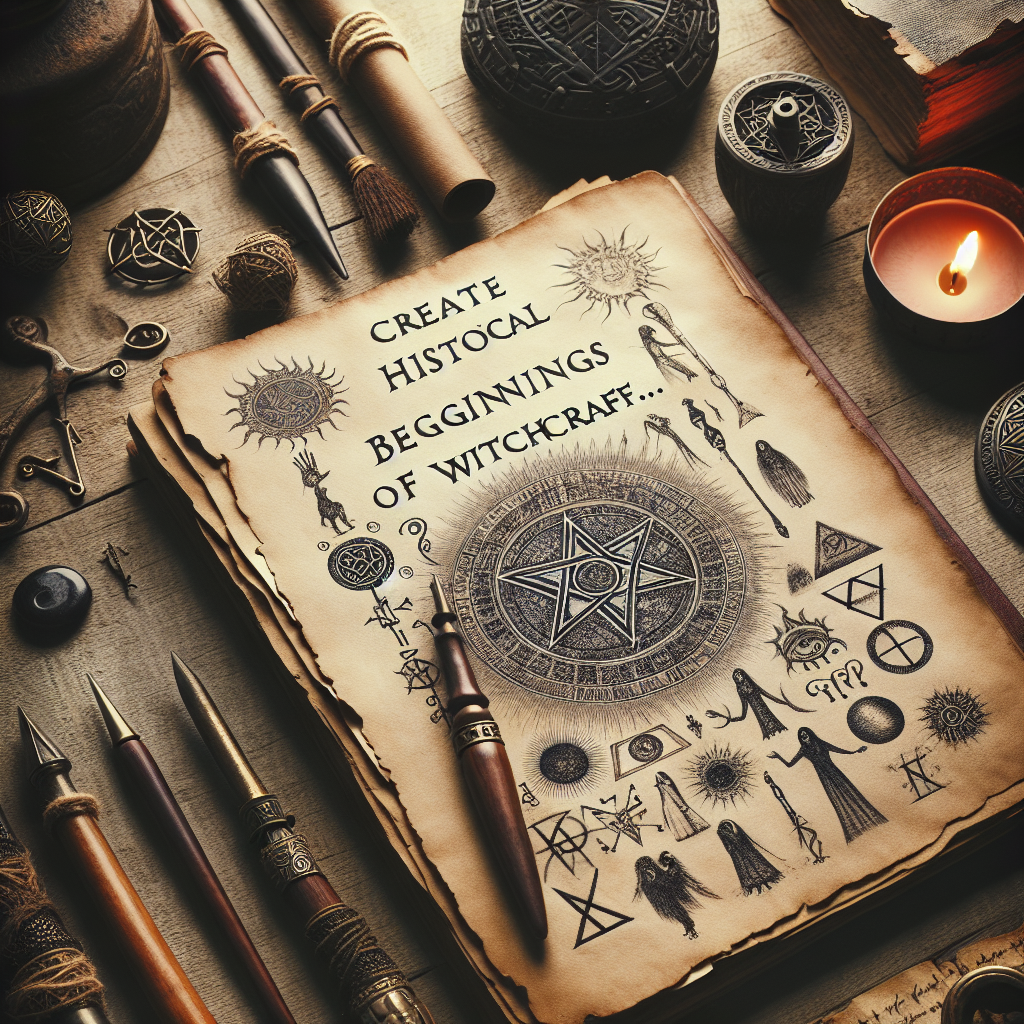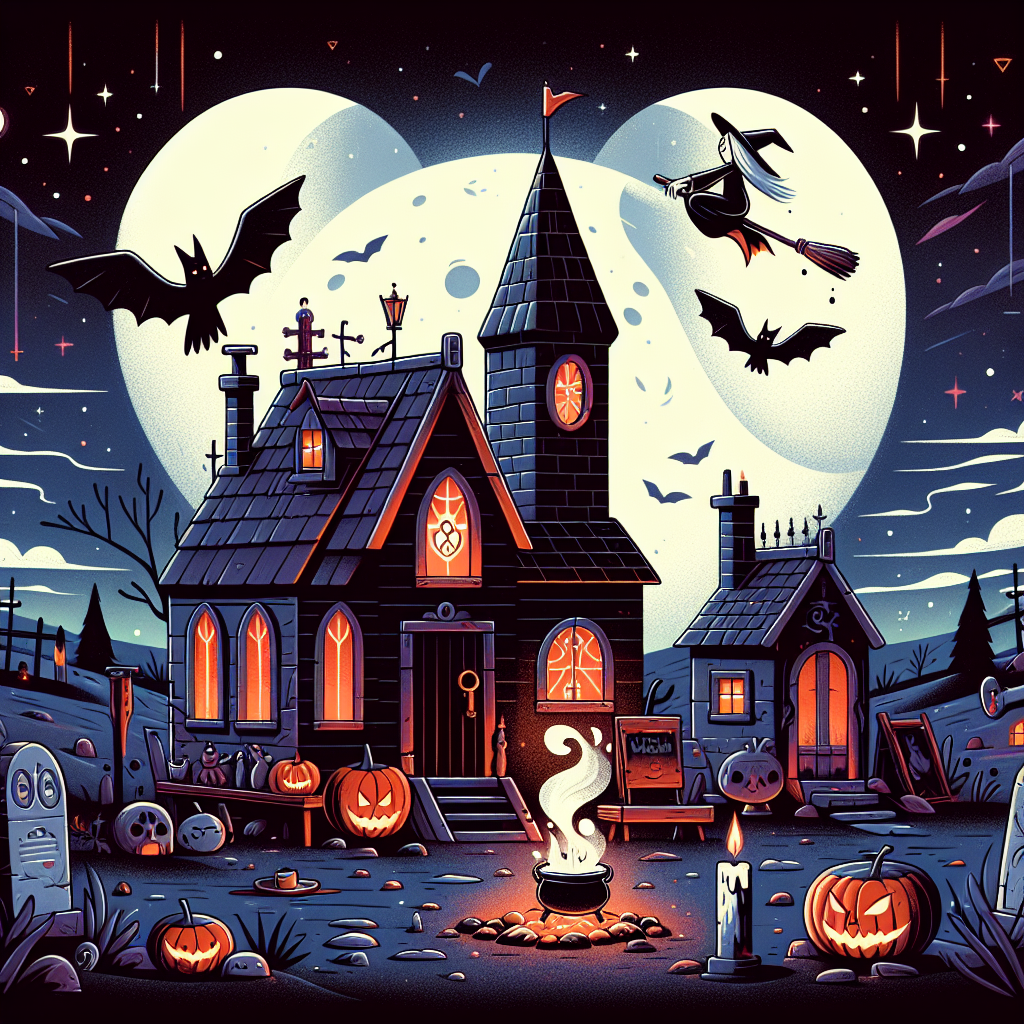As an Amazon Associate I earn from qualifying purchases.

The belief in magical practices and witchcraft is as ancient as humanity itself, with evidence of its existence found in the earliest human cultures. Witchcraft, broadly defined, refers to the practice of magical skills, spells, and abilities, and it has been both revered and reviled throughout history. From the shamanic traditions of indigenous societies to the cunning folks in medieval Europe, the concept of individuals wielding supernatural powers has been a persistent element of human folklore and spirituality.
Tracing the origins of witchcraft stretches back to prehistoric times, where cave paintings and artifacts suggest that early humans believed in a spiritual world where magic was a powerful force. The ancient world held magic in a complex duality, with societies like the Egyptians and Greeks considering it both a legitimate religious practice and a potentially harmful craft. In classical antiquity, witches were often seen as wisewomen or men who could offer potions or spells for healing, yet they could also be feared or accused of maleficium, the practice of evil magic.
The image of witchcraft took a dark turn in medieval Europe, culminating in the witch hunts and trials that peaked between the 15th and 18th centuries. During this time, an estimated 40,000 to 60,000 people were executed for witchcraft, a period that entrenched the stereotype of witches as malevolent figures flying on brooms and consorting with the devil. The infamous Malleus Maleficarum, a treatise on witch-hunting published in 1487, played a significant role in spreading the hysteria that surrounded witchcraft during this era.
Today, witchcraft has been re-evaluated and reclaimed by modern movements such as Wicca, which emerged in the 20th century, celebrating the practice as a form of nature-based spirituality. Contemporary witches often embrace the archetype as a symbol of wisdom, healing, and feminine power, separating themselves from the historically negative connotations. Furthermore, the United Nations estimates that there are more than 1 million people practicing Wicca or related forms of neopaganism today, demonstrating the enduring fascination and evolving perception of witchcraft in modern society.
`
Tracing the Origins of Witchcraft: When Did It Begin?
`
Witchcraft, a practice often enveloped in mystery and superstition, is believed to have ancient roots that predate recorded history. Typically associated with the use of supernatural powers or magic for various purposes, witchcraft has been recognized in numerous cultures worldwide. Definitions related to the tradition identify witchcraft as a complex, multifaceted phenomenon encompassing a range of beliefs, rituals, and cultural expressions. Historical records of witchcraft often begin with the witch trials in the Early Modern period; however, anthropological evidence suggests that forms of shamanism and ritual magic may have served as precursors to what we define as witchcraft today. In various societies, it has been interwoven with religion, medicine, and community practices, adapting and evolving through the ages. Join us as we dive into a comprehensive discussion that explores the intricate tapestry of witchcraft's beginnings and its enduring impact across civilizations.
Witchcraft is a complex concept that intertwines with various aspects of human belief and cultural history, making pinpointing its exact origins challenging. The practice of what we might recognize as witchcraft has ancient roots that can be traced back to prehistoric times when shamanism and animism were prevalent. These early forms of spiritual practice involved using spells, charms, and rituals to harness natural forces or to influence the spirit world, and they can be seen as early precursors to what would come to be called witchcraft.
In historical records, the term “witchcraft” often refers to the use of supernatural or magical powers to affect change, and it has been perceived and defined differently across cultures and eras. As such, it is essential to differentiate between the anthropological understanding of witchcraft, which encompasses a wide array of magical practices around the world, and the definition that emerged primarily in Europe during the early modern period.
### Earliest Evidence of Witchcraft Practices
The earliest evidence of practices that could be considered witchcraft dates back to the Paleolithic era, where cave paintings and artifacts suggest a belief in a supernatural world that could be influenced by human beings. For example, the famous cave paintings in Lascaux, France from around 17,000 BCE depict scenes that some anthropological scholars interpret as rituals or shamanic activities.
As societies evolved, so did their spiritual practices. The ancient Egyptians, for instance, practiced a form of magic that was deeply integrated into their religion and daily life, with spells and incantations inscribed in their texts, such as the Pyramid Texts and the Book of the Dead, dating back to around 2400 BCE and 1550 BCE respectively.
### Witchcraft in Antiquity
In antiquity, several cultures had their forms of witchcraft or magic. The Greeks and Romans had a variety of magical practices, and figures like Circe and Medea from Greek mythology were depicted as witches. The development of Hellenistic magic, which included astrology, alchemy, and the use of magical papyri, further expanded the scope of what could be classified as witchcraft.
### The European Witch Hunts
A significant turning point in the history of witchcraft was the Early Modern witch hunts in Europe, which primarily occurred between the 15th and 18th centuries. These hunts were fueled by a combination of social, economic, and religious factors and led to the persecution and execution of tens of thousands of individuals, predominantly women. The infamous witch trials often relied on the Malleus Maleficarum, a treatise on witch-hunting written by Heinrich Kramer in 1487, which played a crucial role in shaping the European concept of witchcraft and its association with diabolism.
### Witchcraft in Indigenous Cultures
While the concept of witchcraft in Europe was taking a sinister turn, indigenous cultures around the world maintained their own practices involving magic and ritual. From the shamans of Siberia to the medicine men and women of the Native American tribes, each culture had practitioners believed to have the power to heal, protect, and sometimes harm, using means that Western society would later label as witchcraft.
### The Reclamation of Witchcraft
Throughout the 19th and 20th centuries, witchcraft began to see a form of reclamation and transformation. Movements such as the modern Pagan revival and the birth of contemporary religious paths like Wicca in the mid-20th century, founded by Gerald Gardner, reinvented the concept of witchcraft as a nature-based, polytheistic spiritual path.
### Contemporary Perspectives and Legal Status
In the present day, witchcraft is recognized globally in various forms. It is a legally protected practice in many parts of the world, although there remain countries where accusations of witchcraft can lead to violence and persecution. According to the United Nations, as of 2009, over 80 countries have legislation against witchcraft accusations, a statistic that emphasizes the ongoing struggle against superstition and prejudice in the modern age.
This brief historical overview highlights the complexity and longevity of witchcraft practices, evolving from prehistoric shamanistic rites to a broad spectrum of spiritual beliefs and experiences. Without a definitive starting point, witchcraft represents a fascinating thread woven throughout human history, reflective of our innate desire to understand and influence the world around us.
1. What is the earliest recorded history of witchcraft?
Witchcraft, as a practice of using magical abilities or spells, has roots in prehistoric times and can be traced back to the earliest human cultures. However, the first documented evidence of witchcraft accusations comes from the Code of Hammurabi, around 1755 BC.
2. Is witchcraft only a Western phenomenon?
No, witchcraft is not only a Western phenomenon. Variations of witchcraft and magical practices can be found across different cultures worldwide, including Africa, Asia, the Americas, and Oceania, each with its unique traditions and beliefs.
3. How did ancient civilizations view witchcraft?
Ancient civilizations often had complex views on witchcraft, with some perceiving it as a legitimate and integral part of their spiritual and cultural practices, while others saw it as a malignant force and punished those accused of witchcraft severely.
4. Did all societies believe in the concept of witchcraft?
While not all societies explicitly used the term ‘witchcraft', many had concepts of magical practices or individuals who could harness supernatural powers, which could be akin to the modern understanding of witchcraft.
5. When did the major witch hunts begin?
Major witch hunts began in the late Medieval period, with a significant increase in the 15th to 18th centuries, especially in Europe during the period known as the ‘witch craze'.
6. What role did religion play in the persecution of witches?
Religion played a significant role in the persecution of witches, particularly in Christian Europe, where witchcraft was often seen as heresy and an affront to the teachings of the Church. The belief that witches made pacts with the devil led to widespread fear and subsequent witch trials.
7. Were there any famous witch trials in history?
Yes, there have been several famous witch trials throughout history, with the Salem Witch Trials in 1692 in Massachusetts, USA, being one of the most well-known. Others include the Pendle Witch Trials in England and the Torsåker witch trials in Sweden.
8. How did the Enlightenment affect beliefs in witchcraft?
The Enlightenment, with its emphasis on reason and scientific thought, led to a decline in the belief in witchcraft in some parts of Europe. This shift in thinking contributed to the cessation of official witch hunts and a more skeptical view of accusations of witchcraft.</
9. Does witchcraft still exist today?
Yes, witchcraft still exists today in various forms. In some cultures, it continues as part of traditional religious practices, while in others, contemporary witchcraft, such as Wicca, is practiced more as a spiritual or religious path.
10. Are modern-day witchcraft practices protected by law?
In many countries, modern-day witchcraft practices are protected under laws that guarantee freedom of religion and expression. However, there are still places where accusations of witchcraft can result in persecution and violence.
Conclusion
Tracing the beginnings of witchcraft is a complex journey that intertwines with the history of ancient civilizations, where magical practices and spiritual beliefs were widespread. These early forms evolved with cultural shifts, often meshing with traditional rituals and folklore. As societies moved through the Classical Antiquity period and into the Middle Ages, the concept of witchcraft took on a darker connotation, influenced heavily by the rising tide of religious orthodoxy. Records from these times denote a significant transition as witchcraft became associated with heresy and malevolent acts under the scrutinizing eyes of Christian authorities.
The persecution of those believed to be witches, particularly from the 15th to the 17th centuries, marks a profound period in history where fear and superstition led to widespread witch hunts and trials. The advent of the Enlightenment and a growing emphasis on science and rationalism helped to slowly dismantle the fears that fueled witch trials. Today's understanding of witchcraft reflects a tapestry of ancient practices, historical events and cultural narratives that has evolved over millennia. Modern witchcraft, often linked with neopagan movements such as Wicca, has reclaimed many ancient symbols and practices, transforming the legacy of witchcraft from fear and persecution into one of empowerment and spirituality.
Amazon and the Amazon logo are trademarks of Amazon.com, Inc, or its affiliates.


